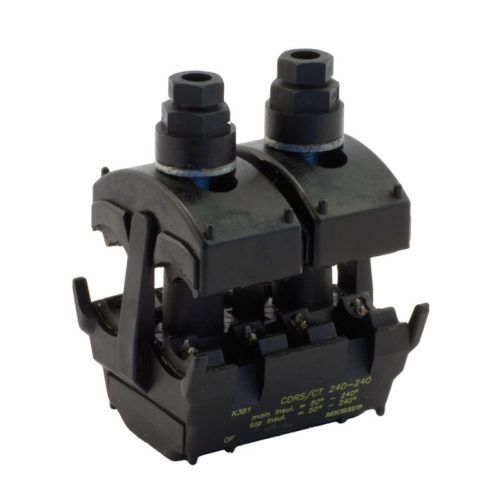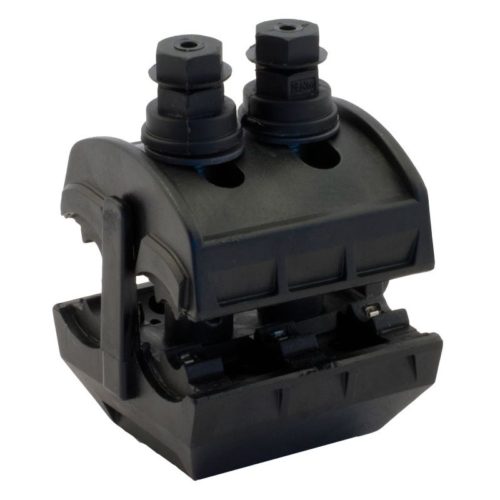-
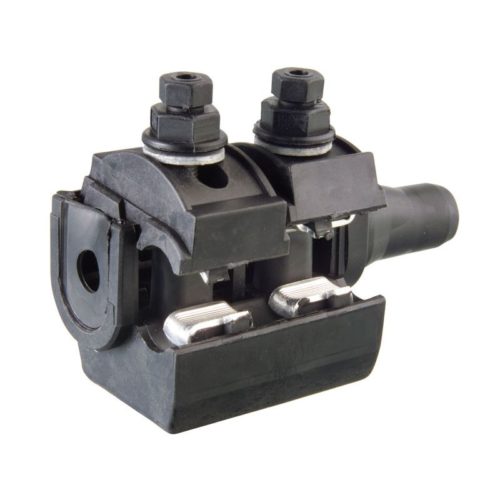
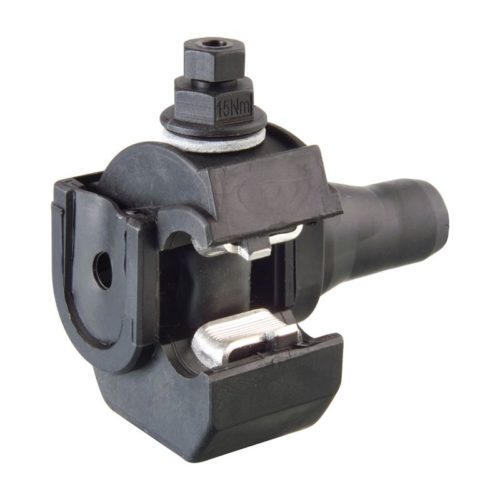 This connector is designed to connect a low voltage A.B.C. (Aerial Bundled Conductors) network to another low voltage aluminium alloy or copper bare conductors network. The section of the bare conductors is from 7 to 240mm² depending on the model. The section of the insulated cables is from 25 to 150mm² depending on the model.
This connector is designed to connect a low voltage A.B.C. (Aerial Bundled Conductors) network to another low voltage aluminium alloy or copper bare conductors network. The section of the bare conductors is from 7 to 240mm² depending on the model. The section of the insulated cables is from 25 to 150mm² depending on the model. -
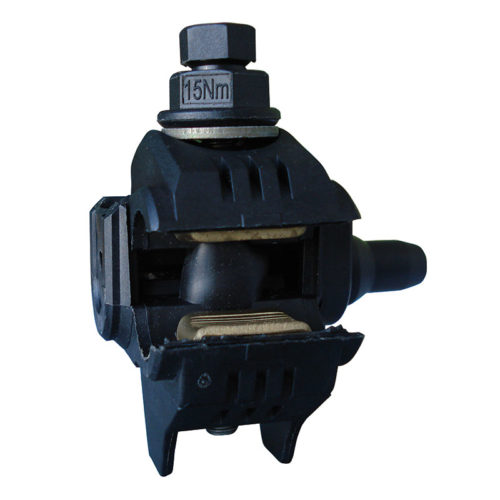
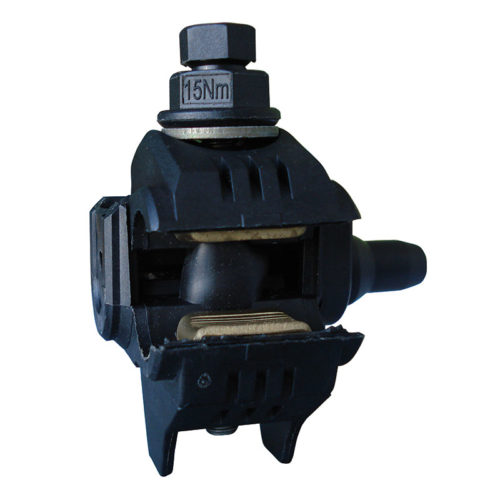 This connector is designed to connect the insulated service conductors to the low voltage overhead copper or aluminium alloy bare conductor network. Two versions are available according to the type of conductor to be connected (Al or Cu): - CNA (with aluminium alloy contact bridges), - CNU (with rough brass contact bridges).
This connector is designed to connect the insulated service conductors to the low voltage overhead copper or aluminium alloy bare conductor network. Two versions are available according to the type of conductor to be connected (Al or Cu): - CNA (with aluminium alloy contact bridges), - CNU (with rough brass contact bridges). -
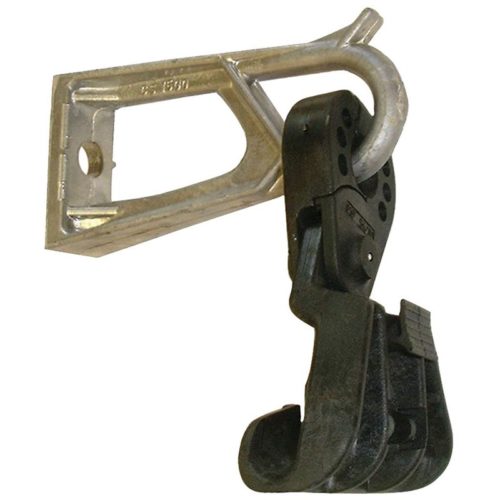
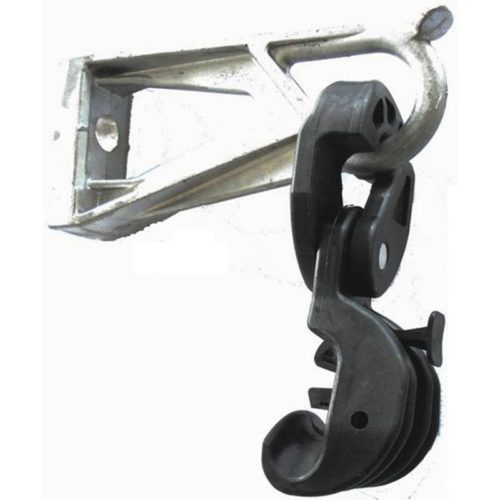 The anchoring assembly is designed for the 1500daN single or double anchoring of A.B.C. (Aerial Bundled Conductors) with insulated neutral messenger of 54.6 and 70mm² sections. It comprises a bracket supporting one or two anchoring clamps. The suspension assembly is designed for suspending the low voltage A.B.C. (Aerial Bundled Conductors) with insulated neutral messenger of 50 - 95mm² sections for code K277 and 50 - 70mm² sections for code K283. It comprises a movable link system, a suspension clamp and a bracket. 2 standard suspension assemblies are available: - ES 1500, - ESF 715 equipped with a fuse element (breaking 715 ± 65daN). The fuse element can be factory calibrated between 500 and 1 200daN. It is designed to break when an abnormal effort is applied on the A.B.C. The cable drops without causing the pole to break (i.e.: tree falling on to a power line). The cable can be quickly put back in position thanks to the installation of a new clamp on the bracket still in place.
The anchoring assembly is designed for the 1500daN single or double anchoring of A.B.C. (Aerial Bundled Conductors) with insulated neutral messenger of 54.6 and 70mm² sections. It comprises a bracket supporting one or two anchoring clamps. The suspension assembly is designed for suspending the low voltage A.B.C. (Aerial Bundled Conductors) with insulated neutral messenger of 50 - 95mm² sections for code K277 and 50 - 70mm² sections for code K283. It comprises a movable link system, a suspension clamp and a bracket. 2 standard suspension assemblies are available: - ES 1500, - ESF 715 equipped with a fuse element (breaking 715 ± 65daN). The fuse element can be factory calibrated between 500 and 1 200daN. It is designed to break when an abnormal effort is applied on the A.B.C. The cable drops without causing the pole to break (i.e.: tree falling on to a power line). The cable can be quickly put back in position thanks to the installation of a new clamp on the bracket still in place. -
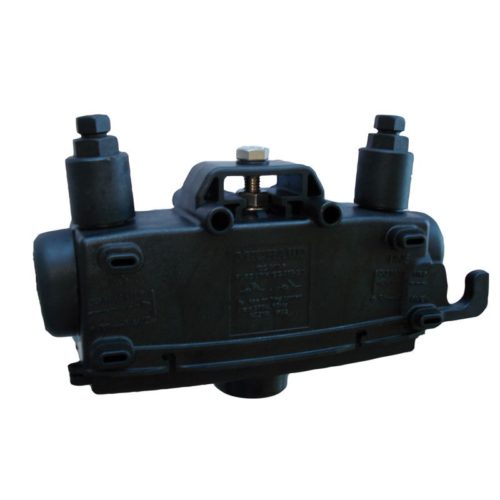 This Fuse Switch Disconnector (FSD) is a single phase device. It is installed at the top of pole or on façade. It protects the overhead connection supplying an individual customer and the low voltage network. It is designed to receive a neutral tube or a 100A maximum, size 22x58 fuse cartridge (according to the IEC 269-2.1 standard)
This Fuse Switch Disconnector (FSD) is a single phase device. It is installed at the top of pole or on façade. It protects the overhead connection supplying an individual customer and the low voltage network. It is designed to receive a neutral tube or a 100A maximum, size 22x58 fuse cartridge (according to the IEC 269-2.1 standard) -
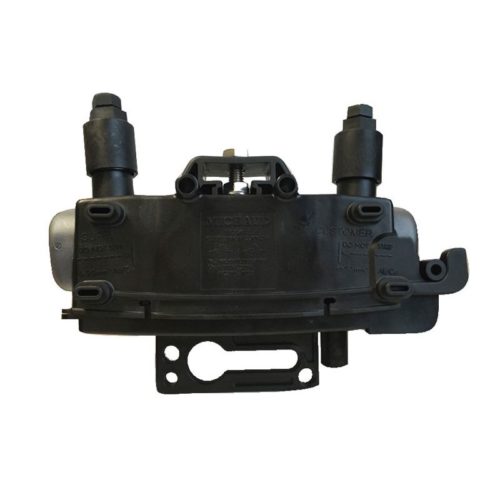
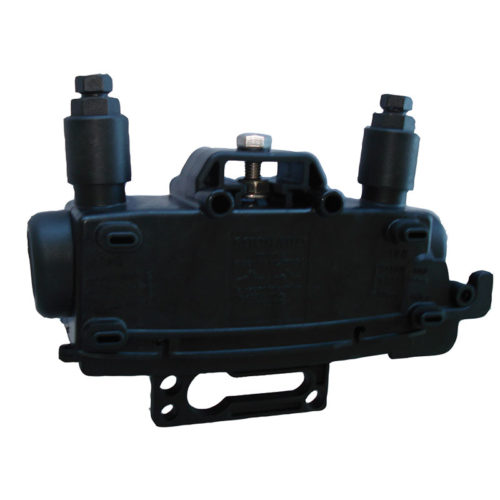 This Fuse Switch Disconnector (FSD) is a single phase device. It is installed at the top of pole or on façade. It protects the overhead connection supplying an individual customer and the low voltage network. It is designated to receive a 160A fuse cartridge or 240A maximum solid connecting link size 00 (according to the IEC 269-2.1 standard).
This Fuse Switch Disconnector (FSD) is a single phase device. It is installed at the top of pole or on façade. It protects the overhead connection supplying an individual customer and the low voltage network. It is designated to receive a 160A fuse cartridge or 240A maximum solid connecting link size 00 (according to the IEC 269-2.1 standard). -
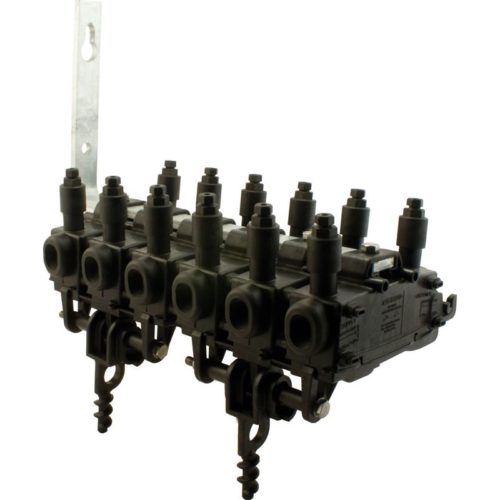
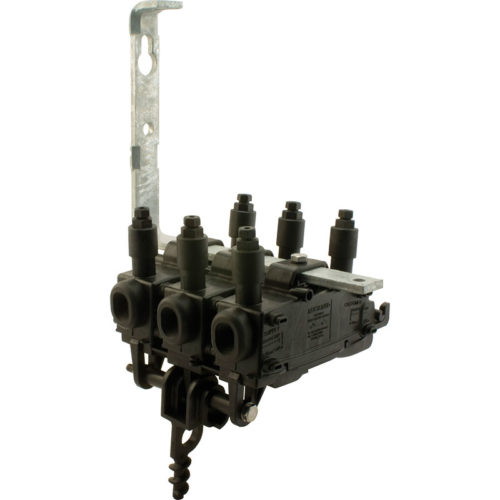 This Gang Fuse Switch Disconnector (FSD) is a multi-phase device. It is installed at the top of a pole or on façade. It protects the overhead connection supplying one or more multi-phase customers, or, the low voltage circuit of a pole mounted transformer. It is designed to receive 160A fuse cartridge or 240A solid connecting links, size 00 (accordig to the IEC 269-2.1 standard).
This Gang Fuse Switch Disconnector (FSD) is a multi-phase device. It is installed at the top of a pole or on façade. It protects the overhead connection supplying one or more multi-phase customers, or, the low voltage circuit of a pole mounted transformer. It is designed to receive 160A fuse cartridge or 240A solid connecting links, size 00 (accordig to the IEC 269-2.1 standard). -
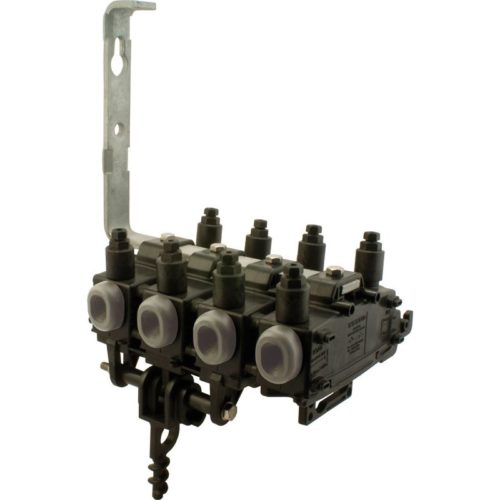
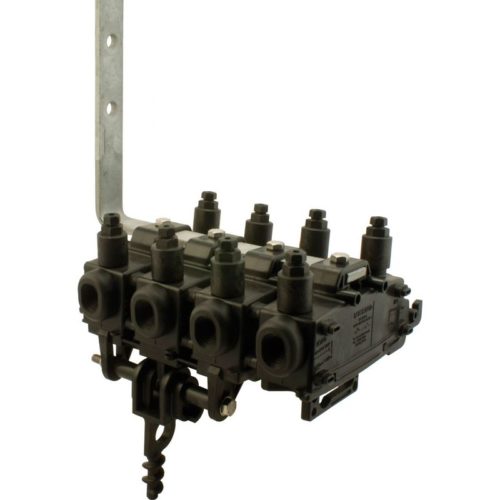 This Gang Fuse Switch Disconnector (FSD) is a multi-phase device. It is installed at the top of a pole or on façade. It protects the overhead connection supplying one or more multi-phase customers, or, the low voltage circuit of a pole mounted transformer. It is designed to receive 160A fuse cartridge or 240A solid connecting links, size 00 (according to the IEC 269-2.1 standard).
This Gang Fuse Switch Disconnector (FSD) is a multi-phase device. It is installed at the top of a pole or on façade. It protects the overhead connection supplying one or more multi-phase customers, or, the low voltage circuit of a pole mounted transformer. It is designed to receive 160A fuse cartridge or 240A solid connecting links, size 00 (according to the IEC 269-2.1 standard). -
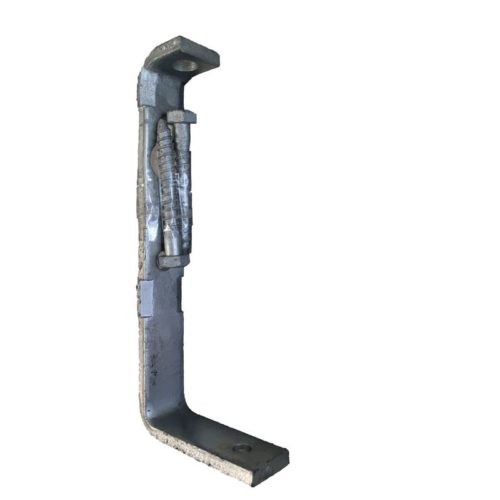
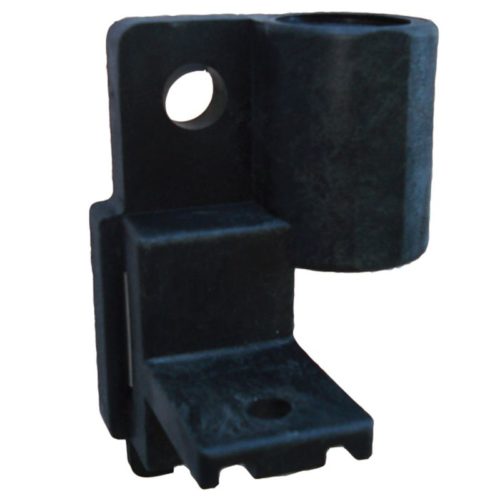 This Fuse Switch Disconnector (FSD) is a single phase device. It is installed at the top of pole or on façade. It protects the overhead connection supplying an individual customer and the low voltage network. It is designed to receive a neutral tube or 100A maximum, size 22x58 fuse cartridge (according to the IEC 269-2.1 standard).
This Fuse Switch Disconnector (FSD) is a single phase device. It is installed at the top of pole or on façade. It protects the overhead connection supplying an individual customer and the low voltage network. It is designed to receive a neutral tube or 100A maximum, size 22x58 fuse cartridge (according to the IEC 269-2.1 standard). -
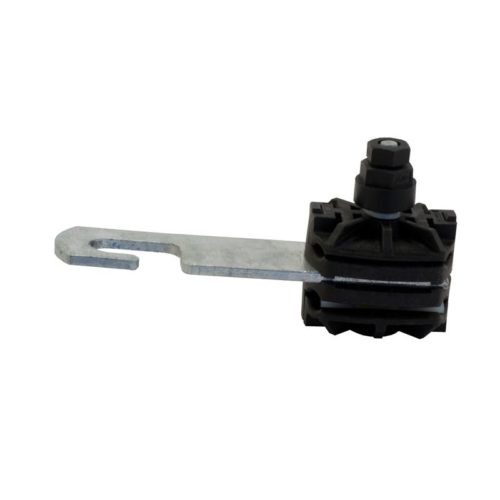
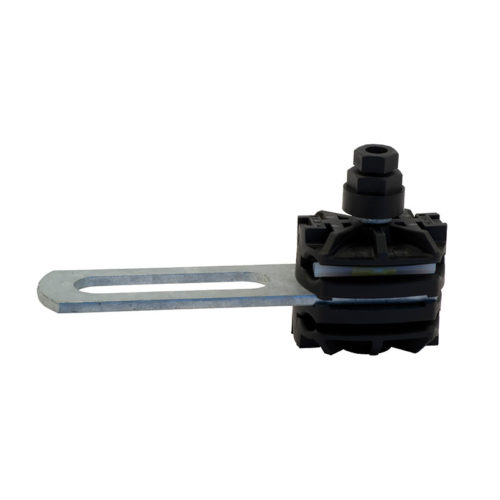 The service anchoring assembly EA 25 is designed for fixing low voltage service A.B.C. (Aerial Bundled Conductors) with capacity of 2x6 to 4x25mm². The anchoring clamp is also available in an adjustable hook version. The service anchoring assembly PA 35 is designed for fixing or suspending low voltage service A.B.C. (Aerial Bundled Conductors) with capacity of 3x16 to 4x35mm².
The service anchoring assembly EA 25 is designed for fixing low voltage service A.B.C. (Aerial Bundled Conductors) with capacity of 2x6 to 4x25mm². The anchoring clamp is also available in an adjustable hook version. The service anchoring assembly PA 35 is designed for fixing or suspending low voltage service A.B.C. (Aerial Bundled Conductors) with capacity of 3x16 to 4x35mm². -
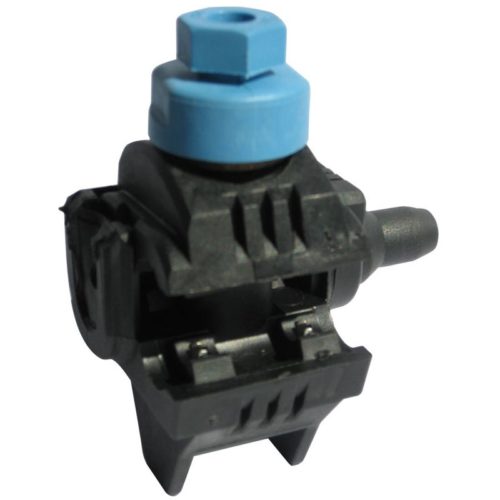
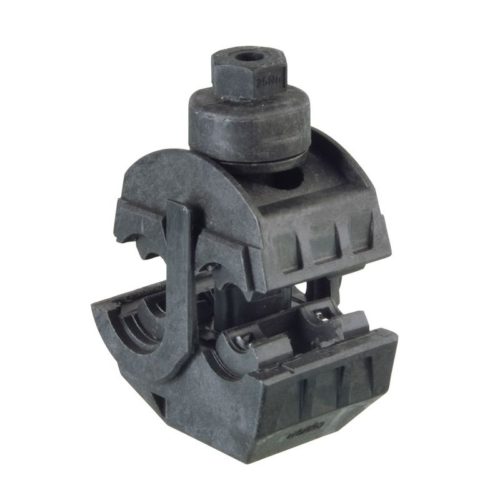 This connector is designed to be used with underground low voltage network for tapping or junction applications. It is implemented in underground cast or injected boxes. It can be used on aluminium, circular or sectoral type cables with paper or synthetic insulation. The underground network box is designed to establish the junction or tap from a round or sectoral underground network (as defined in the NF C 33-210 standard).
This connector is designed to be used with underground low voltage network for tapping or junction applications. It is implemented in underground cast or injected boxes. It can be used on aluminium, circular or sectoral type cables with paper or synthetic insulation. The underground network box is designed to establish the junction or tap from a round or sectoral underground network (as defined in the NF C 33-210 standard). -
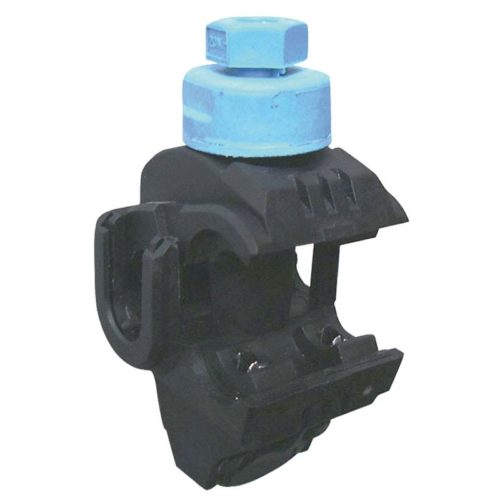
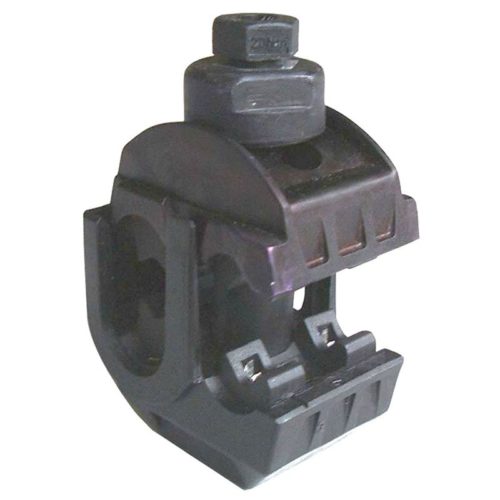 This connector is designed to establish a tap connection on low voltage underground networks. It is located in underground cast or injected boxes. It is used on a main cable, with synthetic or paper insulation, of type: - Circular or sectoral, - Copper or aluminium, - Solid or stranded core. The underground service box is designed to establish a single or double tap from one or 2 line connections from an underground network made up of round or sectoral conductors (as defined in NF C 33-210).
This connector is designed to establish a tap connection on low voltage underground networks. It is located in underground cast or injected boxes. It is used on a main cable, with synthetic or paper insulation, of type: - Circular or sectoral, - Copper or aluminium, - Solid or stranded core. The underground service box is designed to establish a single or double tap from one or 2 line connections from an underground network made up of round or sectoral conductors (as defined in NF C 33-210).
